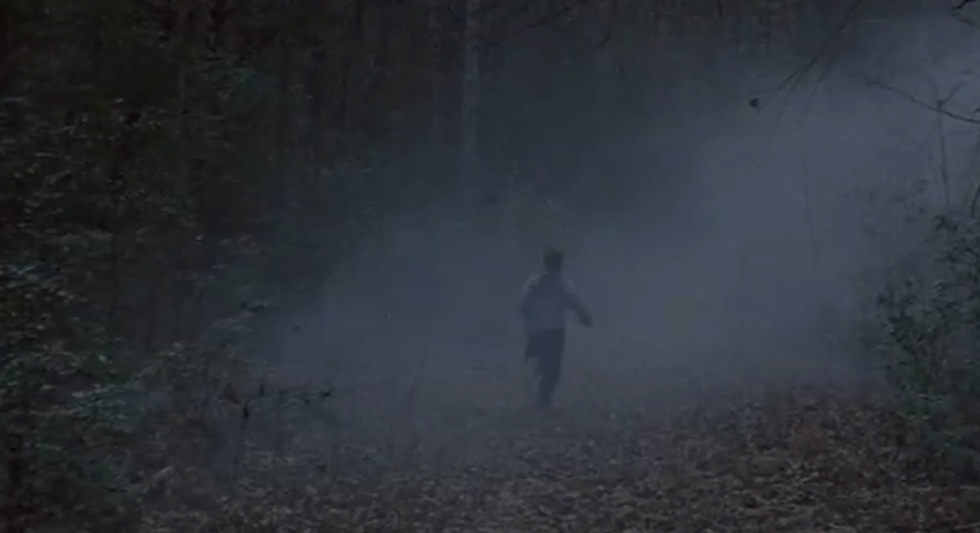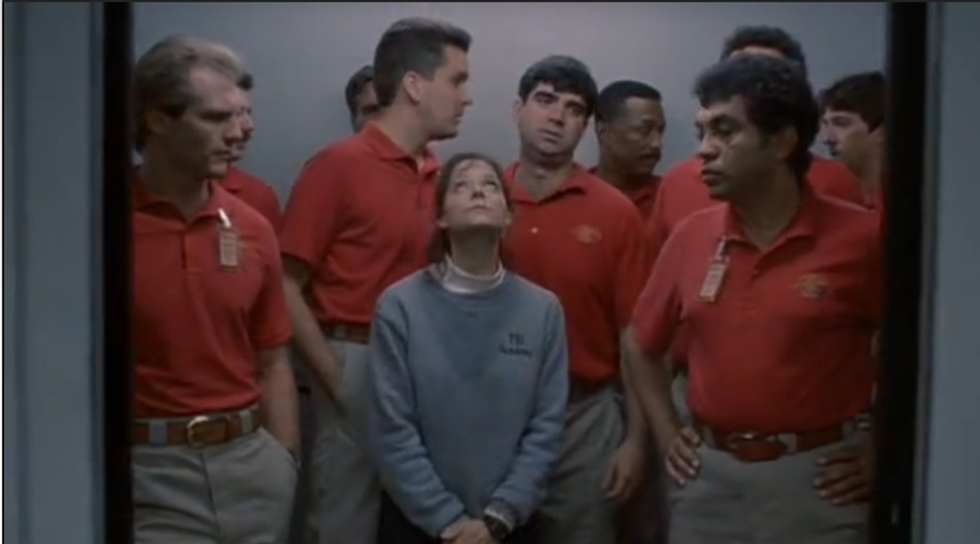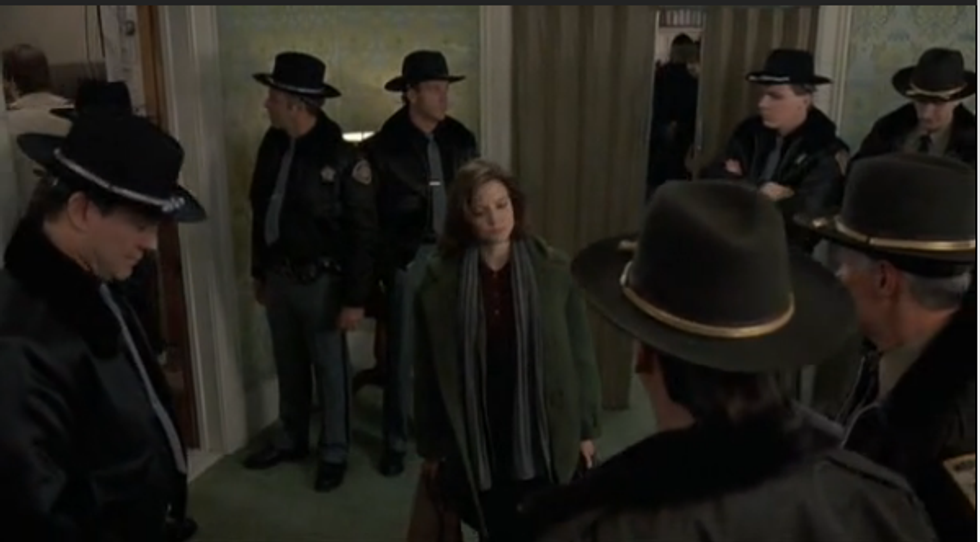In the famous opening sequence of "Silence of the Lambs," we find ourselves in the middle of the woods. There is a gritty contrast between the darkness of the trees and the whiteness of the fog, providing an eerie portrayal of an isolated and largely uninhabited wilderness, a setting typically assigned to horror movies in order to emphasize the feeling of being endangered by the unseen and unknown. The scene continues by tilting away from the medium shot of the tree and providing a high angle shot of the woods below, where we first see Clarice Starling emerging from the fog.
Her isolated vulnerability is made enticingly apparent; the composition of the shots contain a highly voyeuristic quality that is emphasized by the fact that the first time the viewer sees Clarice is in a shot that is both high angled and a long shot, one that emphasizes the smallness of her form in an ominous setting. The sequence continues by integrating match-on-match cuts that serve to build up a sense of anxiety while repeatedly using deep-space composition in order to highlight the isolated and ominous setting that surrounds her character, giving the viewer an impression that Clarice is being chased.
Up until this point, the scene provides the audience with a sequence that is typical of the usual ‘final girl’ archetype; the shots are voyeuristic and emphasize the supposed vulnerability and helplessness of the character. The fact that towards the end of the sequence it is revealed that Clarice is not being chased, but is in fact in an FBI certified obstacle course, however, changes the implications of the opening sequence altogether; rather than portraying Clarice as vulnerable and naive, the obstacle course instead paints Clarice as vulnerable but capable.
The ‘bait and switch’ elements of Clarice Starling’s introduction is interesting in that it establishes Clarice’s vulnerability not as a product of some ‘unknown’ other, but as the result of the constructed male gaze. This is seen within Clarice’s struggles to ‘survive’ in a male-dominated space. Throughout the film, Clarice is continually placed in shots that highlight her smallness in the midst of overwhelmingly male colleagues. Take these two shots, for instance:
Both shots serve to emphasize Clarice’s smallness and ‘otherness’ in the midst of an established normal; in both shots, Clarice is dressed differently, has her small stature emphasized, and is placed in the center of the shot. Both shots place her in a constrained, closed space as well, giving one a sort of claustrophobic and entrapped feeling. All of these aspects play into how many of the obstacles that Clarice faces is centered around her identity as a woman. The last shot in particular is also followed by a series of cuts towards the men surrounding her; in those shots, they are visibly amused by her presence.
However, while Clarice’s feelings of vulnerability rise from being a female in a male-dominated space, this is not to say that her identity as a woman weakens her. In fact, one of the most interesting things about Clarice Starling is that she, as a character, is not punished for expressing autonomy and a desire for control over her own life. Typically, the ‘final girl’ in many horror/thriller films, though eventually empowered through their eventual defeat of the antagonist, tends to be a subject of intense male gaze and expectations. Vulnerability and helplessness is both emphasized and sexualized, and control is repeatedly taken away from her until she is at her lowest point. Even after she defeats the villain, she left largely defined by the terror of her experience. What is interesting about "Silence of the Lambs" is that it places the narration largely in Clarice’s POV; instead of giving the film a rather voyeuristic view of Clarice’s struggles, the audience is forced to identify with the struggles. The opening sequence of the film is effective in that it plays with and refutes conventional thriller voyeurism, and establishes Clarice as a character who both capable and competent.
























